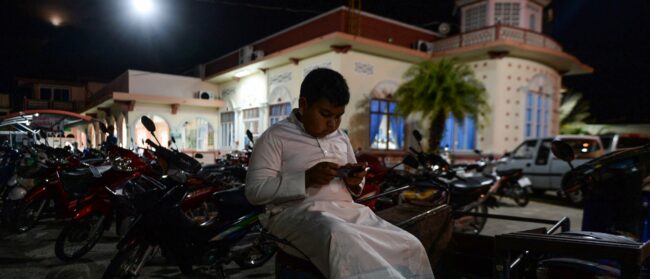Visitors to Siem Reap, Cambodia’s tourism capital, might be mistaken in thinking the smooth asphalt finish and brightly painted streets have been part of the place for as long as barangs (foreigners) have toured Angkor Wat.
Yet Siem Reap’s current facelift was the result of an intensive, around-the-clock makeover that left almost all the city’s main streets torn up for months at a time.
With few tourists traversing the once crowded streets of Siem Reap, authorities calculated the pandemic was the right time for an infrastructure overhaul, which eventually included the renovation of 38 roads covering more than 100 kilometres (62 miles) at a cost of approximately $149 million.
Today, the new roads are nearly complete and Cambodia’s travel bans and lockdowns appear to have ended, leaving Siem Reap primed to reap its reward for white-knuckling through the pandemic.
Cambodia has big plans for Siem Reap’s resurgence, aiming to triple visitors from 6 million in 2019 to 18 million post-pandemic.
“It’s just a shame that all of the new tourists who come in won’t have any idea what it was like for the people who have been here,” said Olly Smith, a 31-year-old British expat who owns a local bar and restaurant called Pomme. “It’s been a nightmare for over a year and a half.”
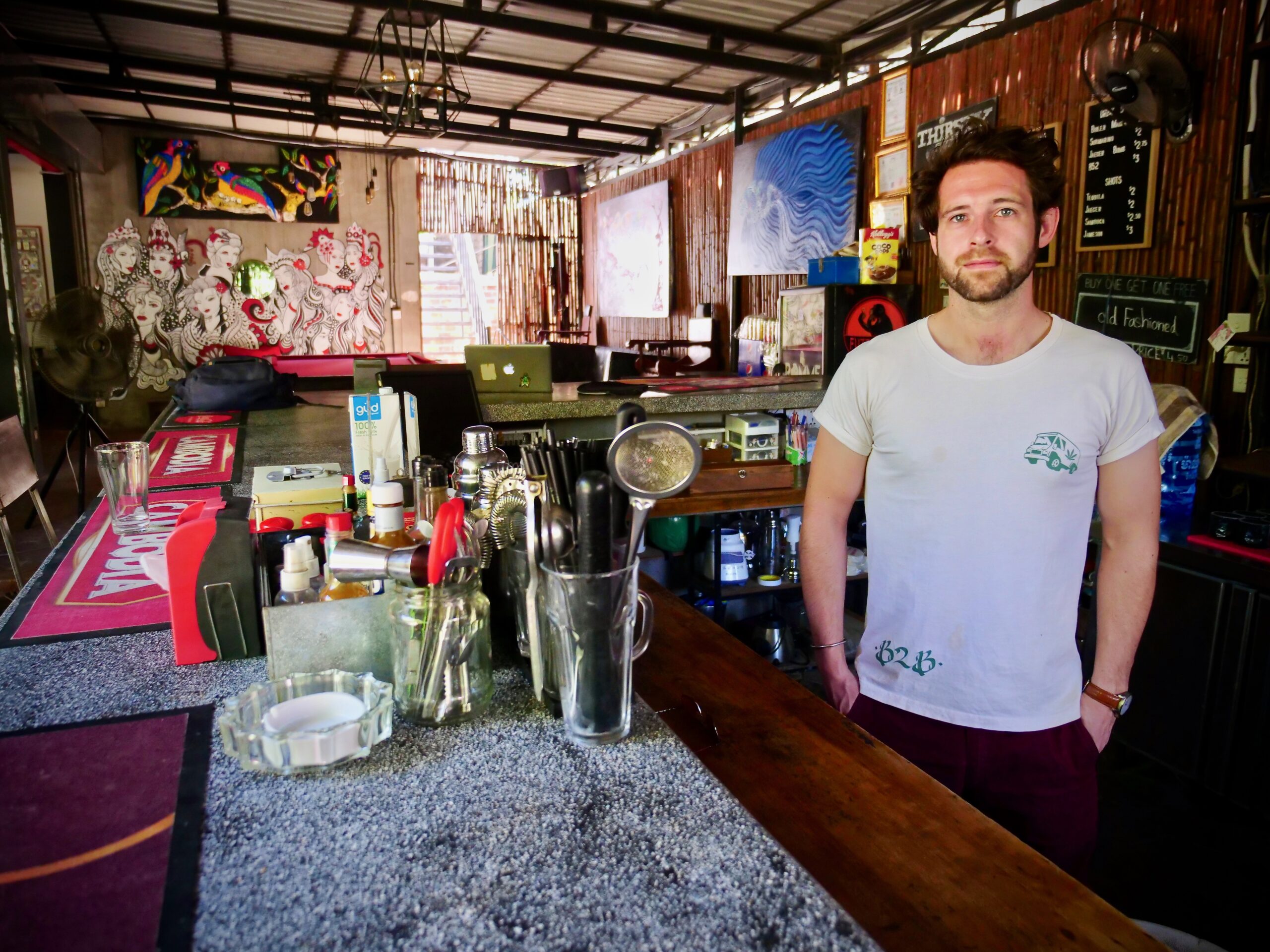
Since the road construction officially launched in late 2020, the layout of the city’s streets could shift like sand dunes. On any given day, residents would emerge from their homes to find themselves stranded on barren concrete ledges facing an entire block torn up and reduced to a tangle of electrical wires, jutting open sewage lines and heavy machinery.
Hives of contractors were active at all times, creating confusion and chaos in the absence of coordination, residents recall. Construction trucks swayed ominously with dirt and rubble as they lumbered along. Children and half-feral dogs embraced the mounds of sand which appeared outside their homes overnight as personal playgrounds, while frustrated tuk tuk drivers and car owners ran aground whilst squeezing past them.
Trees were uprooted, impoverished families evicted and delivery riders and pedestrians came to expect near-death experiences as an everyday risk, dodging trucks, open holes and detritus around construction sites. Businesses suffered the double punch of lockdowns and the hassle their customers faced in reaching them. Smith considered the city a “bombsite” yet acknowledged it was a necessary step towards better infrastructure in Siem Reap.
“But I think [the road construction] was the right thing to do,” Smith said. “It made sense to just do everything all at once.”
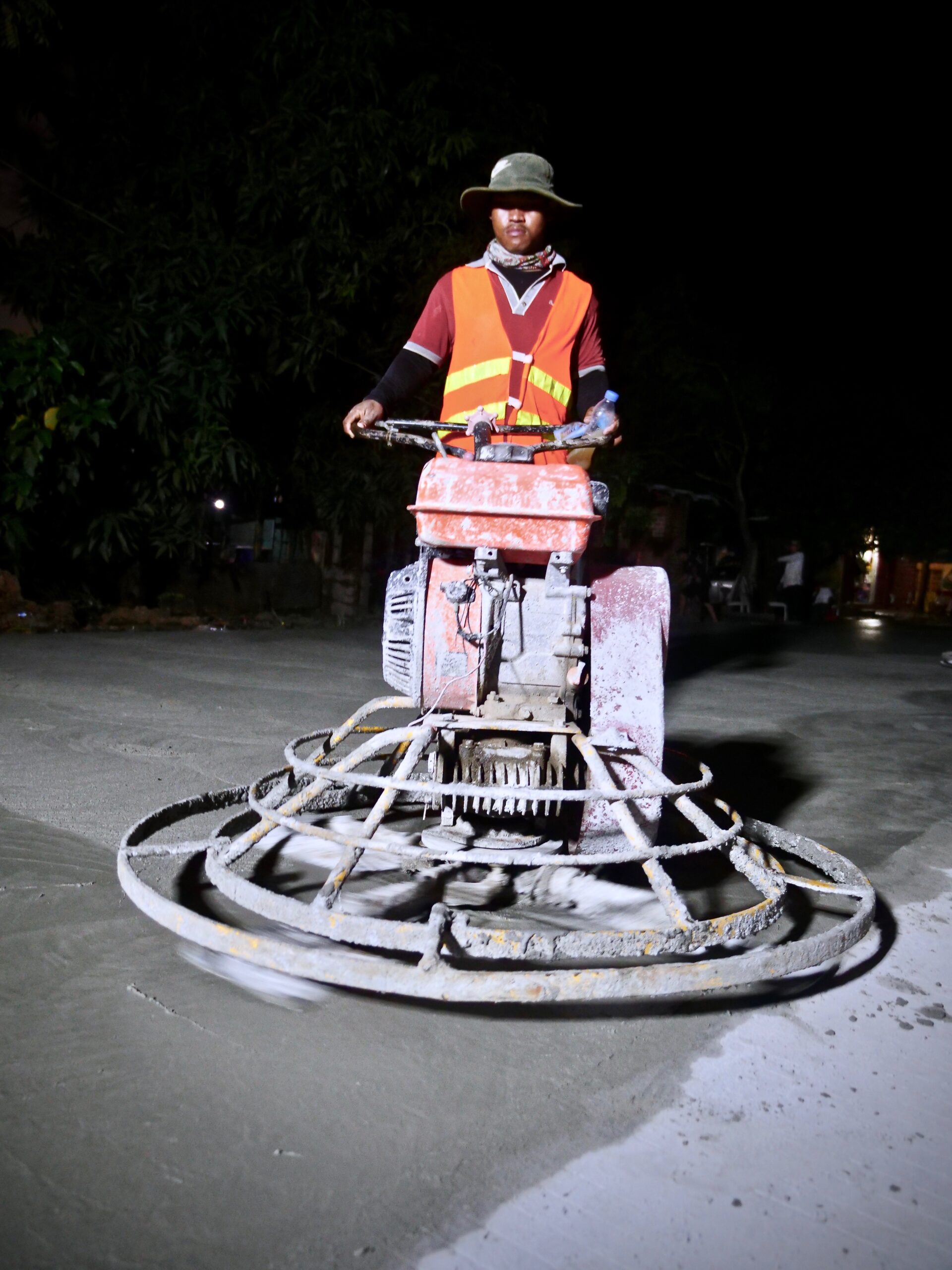
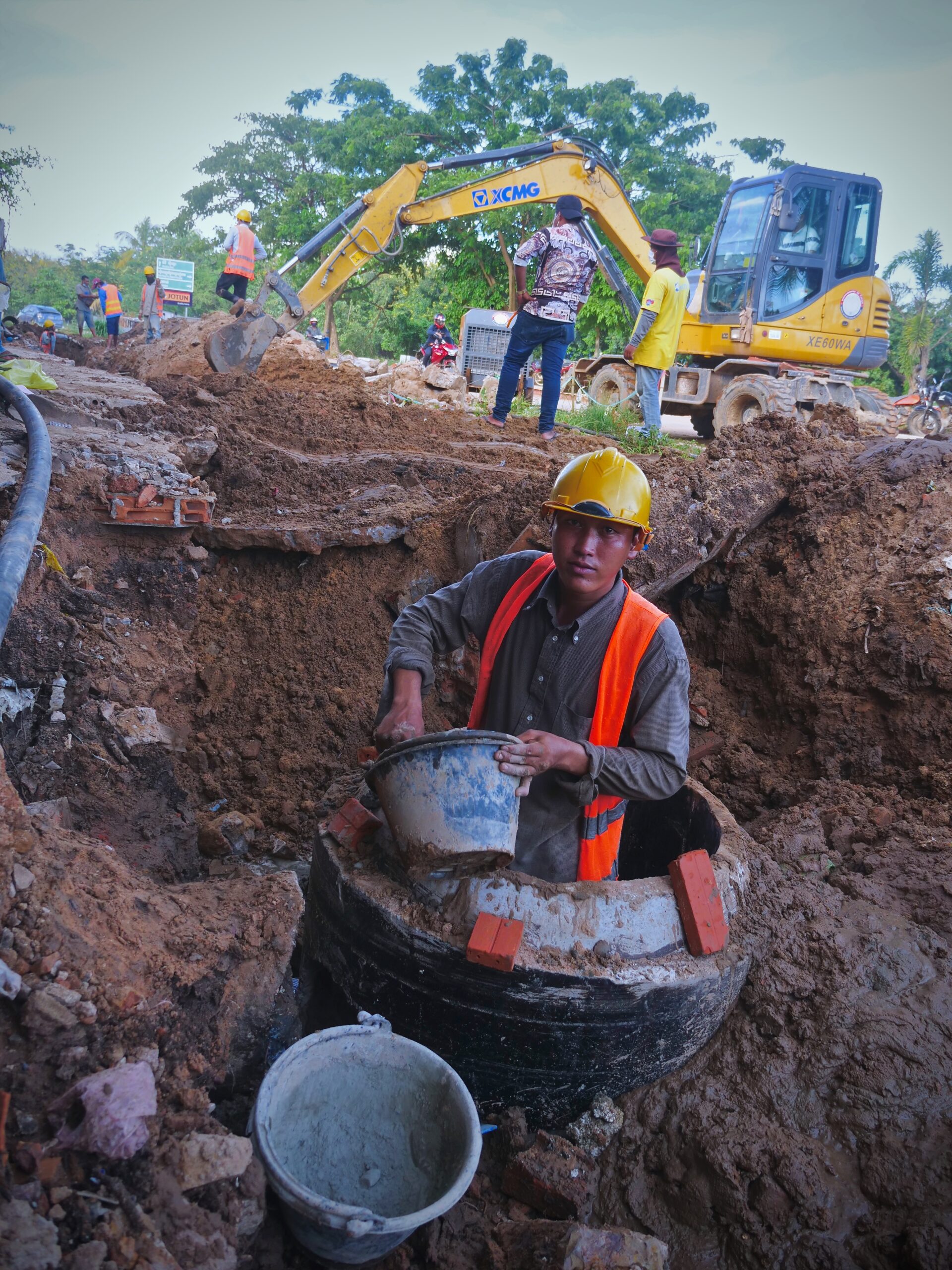
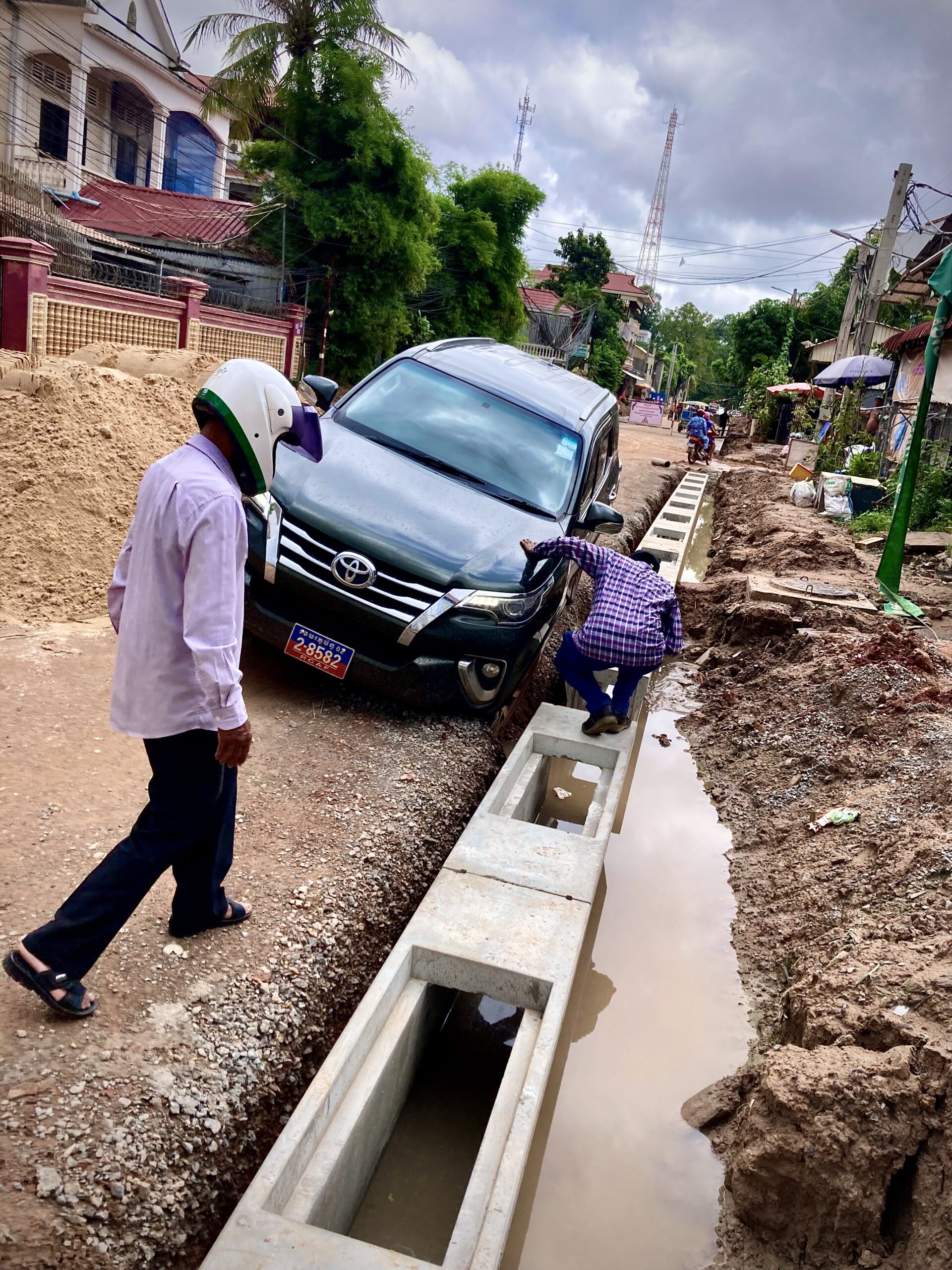
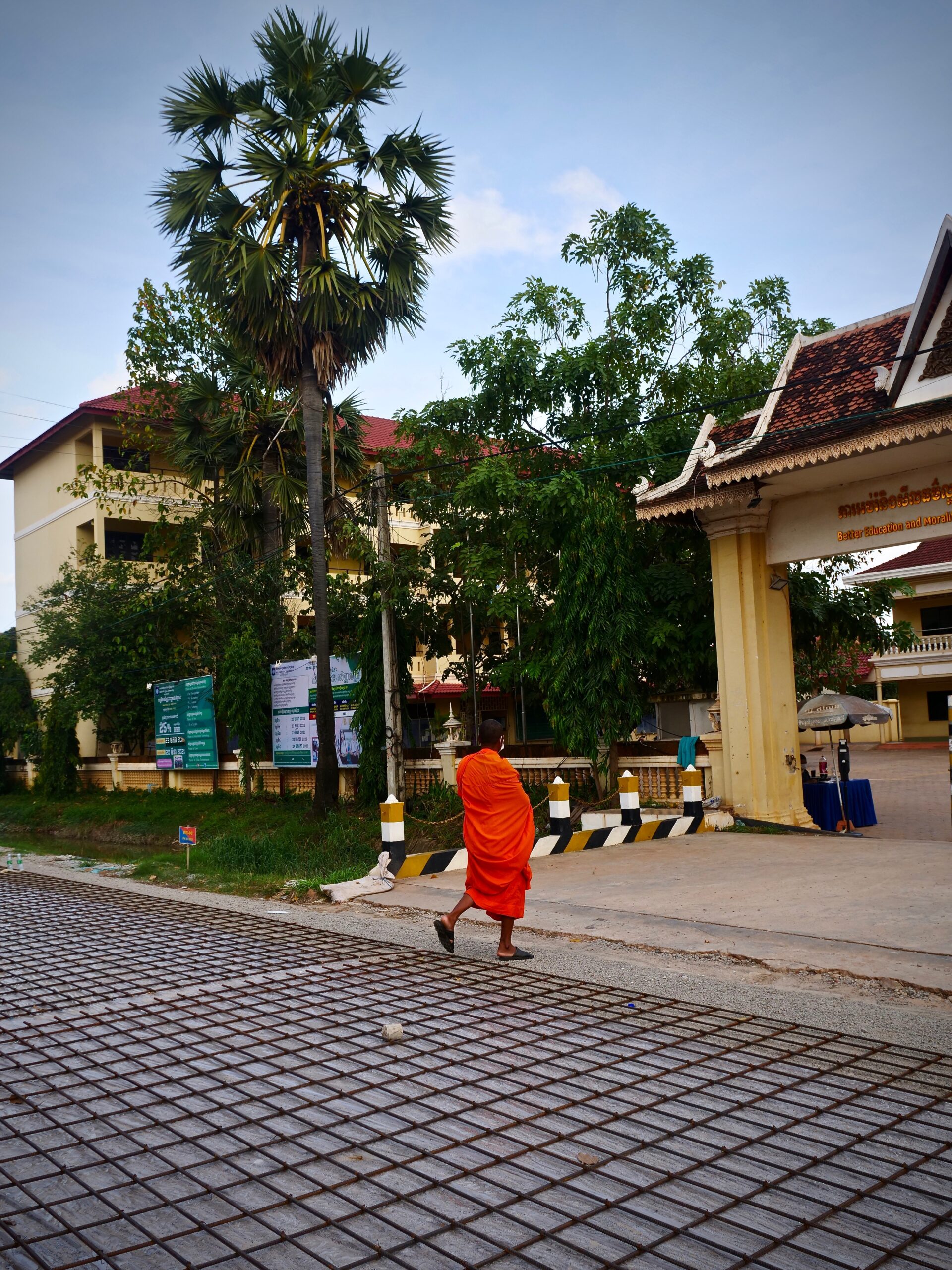
The road construction is part of a broader, long-term development vision for Siem Reap, which the national government has identified as one of four places for development as Smart cities, along with Sihanoukville, Battambang and Phnom Penh.
The specific implementation of the grandiose Siem Reap tourism development plan is still being laid out, but the scheme entails employing the latest technology and data-gathering systems to enhance the quality and efficiency of day to day life, said Darlin Nay, who studies tourism for Cambodia’s Future Forum think tank. A new airport has also been under construction.
The roads initiative was conceived as one way to improve life for residents but also better handle an expected increase in tourism in a city saturated with visitors before the pandemic.
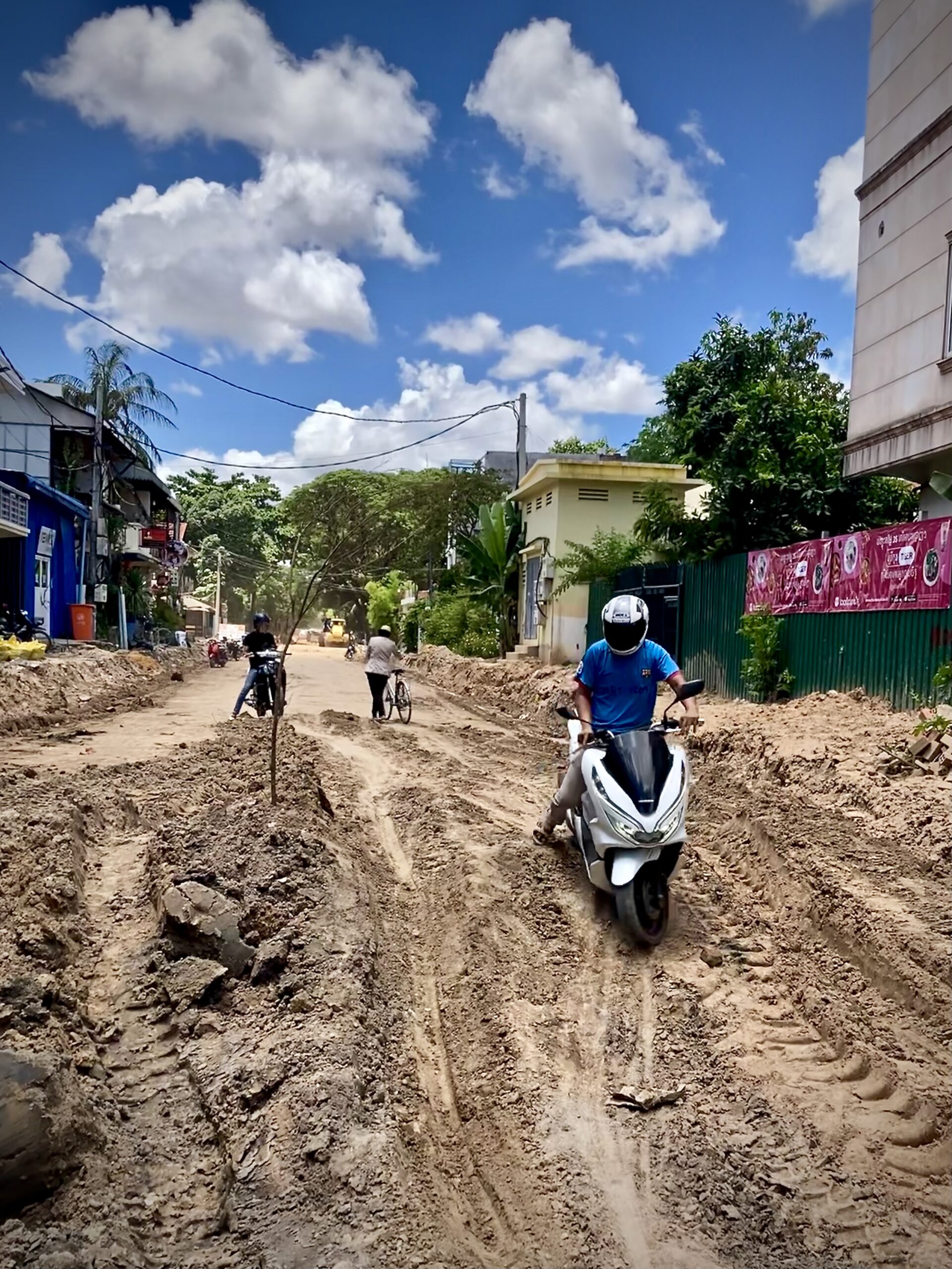
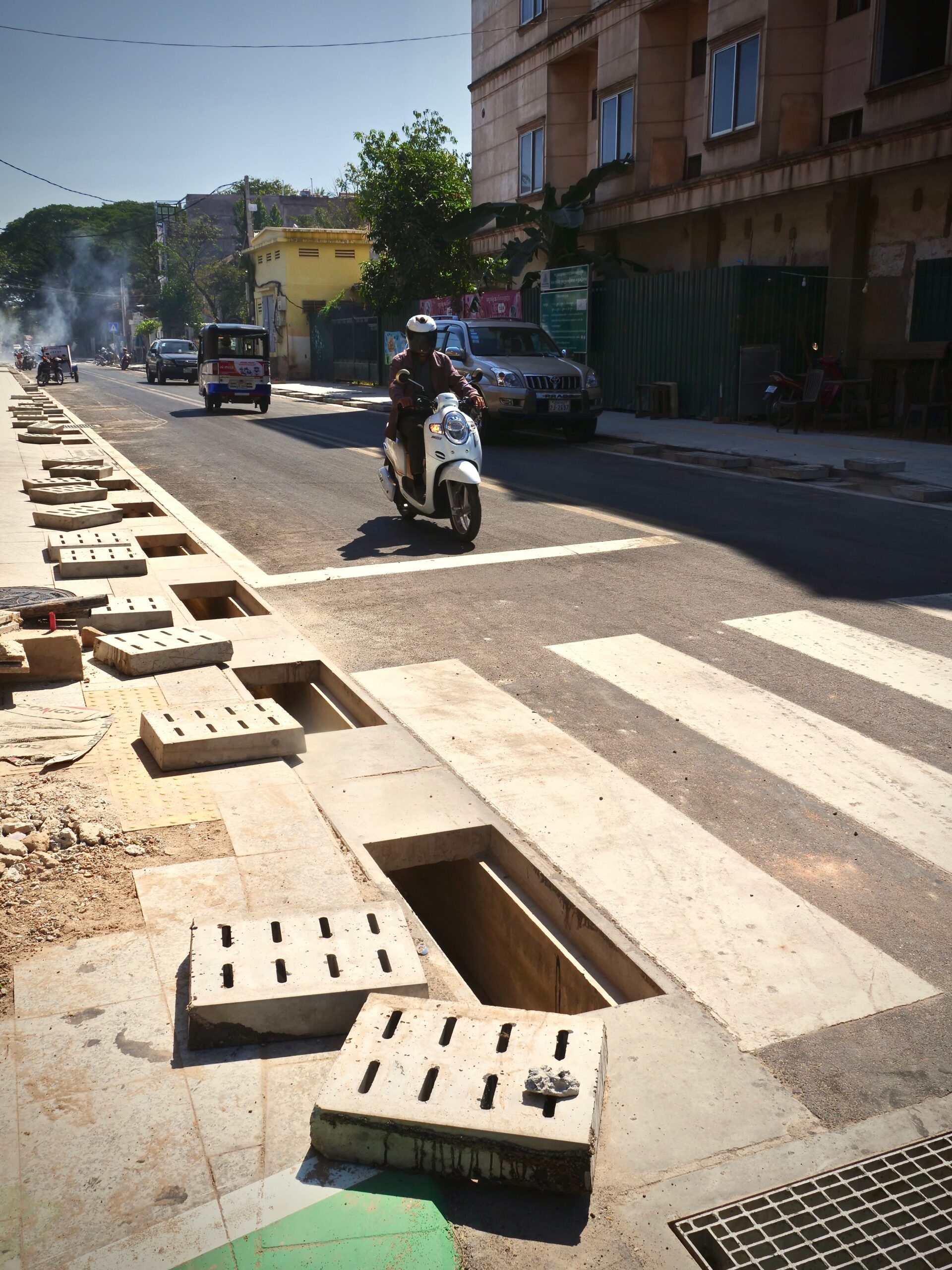
“Siem Reap is already at max capacity,” Nay said. “I’m concerned that more and more tourists will not help the local community.”
Nay remains worried about Siem Reap’s approach to development as the initial economic impact of the pandemic begins to ease, which she sees as doubling-down on servicing tourism without diversifying and empowering sustainable local economies.
She explained authorities should develop concrete plans to ensure Siem Reap benefits from a tourism surge.
More than 40 cents of every dollar spent in Cambodia goes to a foreign company. Many Cambodians are employed in the tourism industry and, although there are high levels of English proficiency in Siem Reap, residents still need opportunities to develop skills and services through which they can increase their earnings, Nay said.
“There’s a lack of capacity for local communities to actually operate businesses,” she said. “A lack of overall skills in handling businesses with foreigners.”
As bigger plans for the city’s future remain in flux while the world continues to struggle with the omicron variant, Siem Reap resident Khim Viryta said she is thankful for the new view of a luscious green park and riverside walkway from her family’s coffee shop, the result of concurrent redevelopment projects alongside nearby road construction.
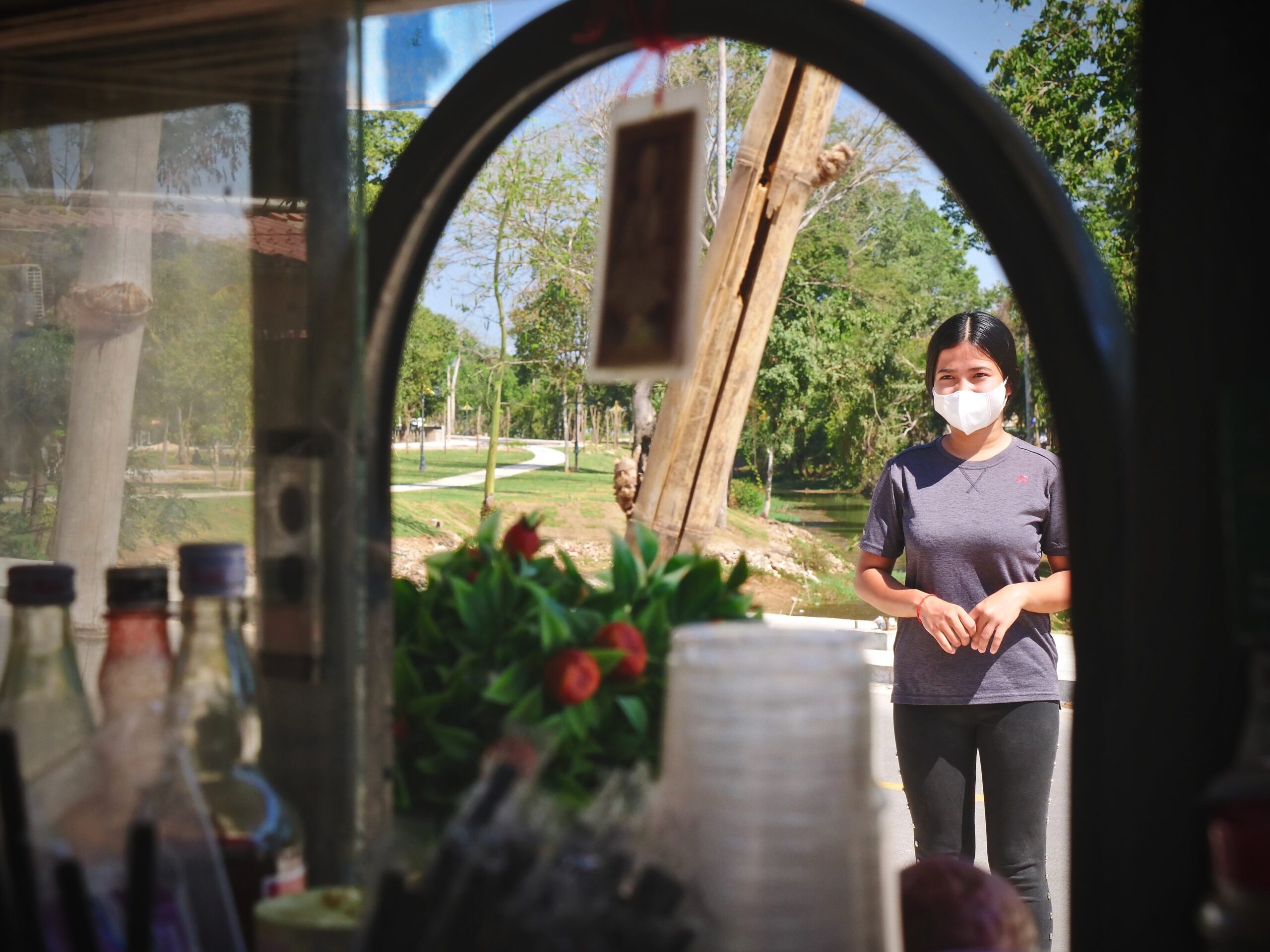
“It’s beautiful, pretty and fresh,” she said, hoping the scenery would improve coffee sales. She also remembered the dozens of families who used to live in the redesigned park area. “It’s good, they took the people to have new land and homes.”
Viryta’s optimism notwithstanding, the ramifications of the resettlement arrangement were far from beneficial for many former riverside inhabitants, among the city’s most vulnerable residents.
The mostly landless families came to Siem Reap, often decades ago, to purchase whatever land they could afford in hopes of participating in the city’s economy. Lacking formal titles, approximately 400 families were evicted in the last two years but the majority ultimately accepted plots an hour from the city following protests.
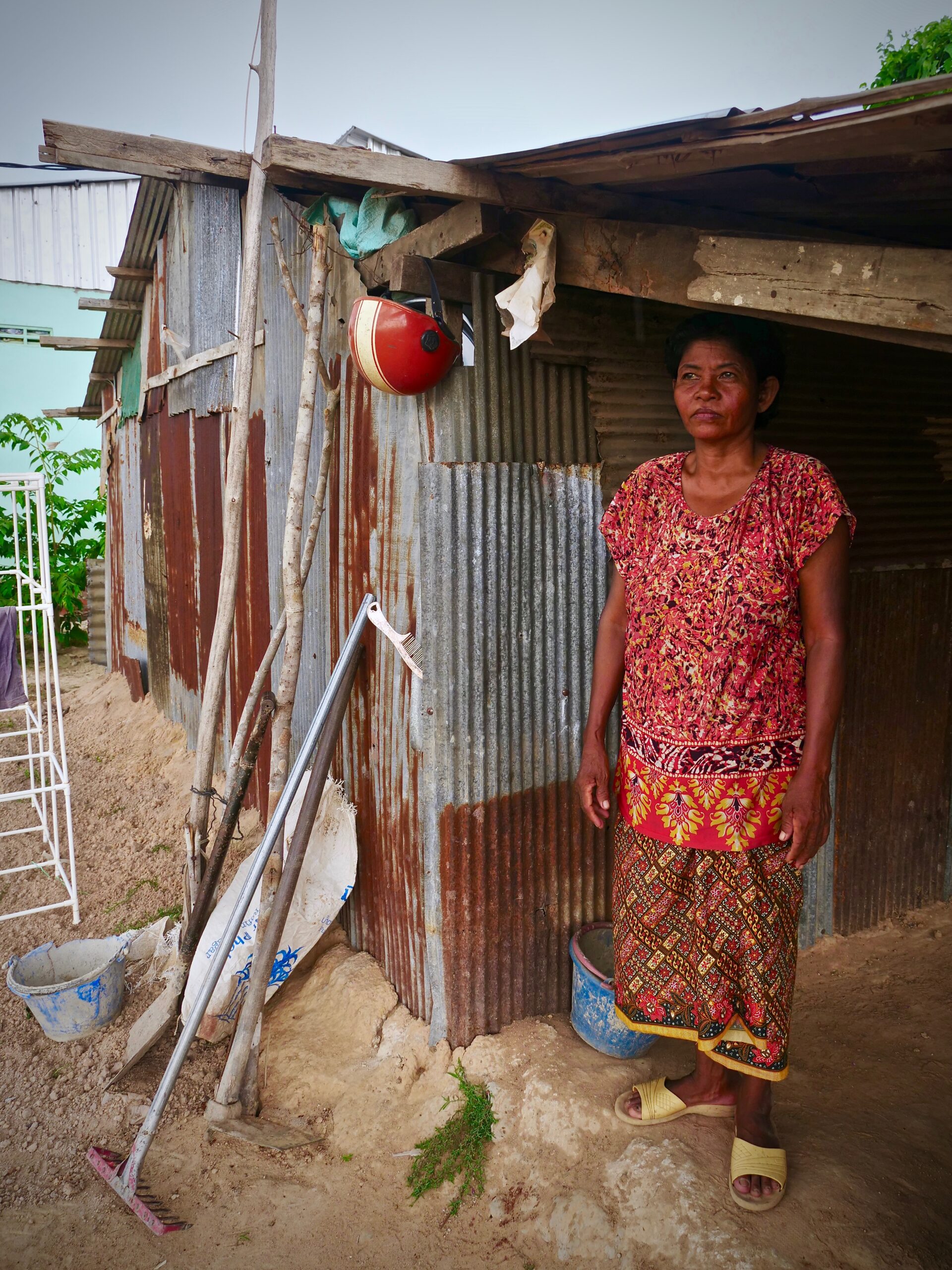
At a barren relocation site, 58-year-old Ruon Sok reflected on the punishing situation. She cares for several grandchildren by herself and cannot afford to buy drinking water from the trucks selling blue jugs nearby. The groundwater from her home smells and there are few ways to make money around the remote site, she said.
“My life is so difficult, and it has become only more difficult since arriving here,” she said in August. “I am old and everything I do, I have to do myself because my children live far from me. I barely have enough money to buy food.”
After the evictions, she salvaged the leftover materials from her old riverside shack to use for her new home. She had nowhere to go but where the authorities sent her.
“I had no choice but to come,” she said.
Following a New Year’s Eve of renewed festiveness in Siem Reap, many residents who had the economic means and good fortune to remain in the city said they are pleased with the return to normalcy, symbolised by their paved streets.
“The roads now are nice, easy and clean,” said Sothavy Sot, who runs a small shop and money wiring service.
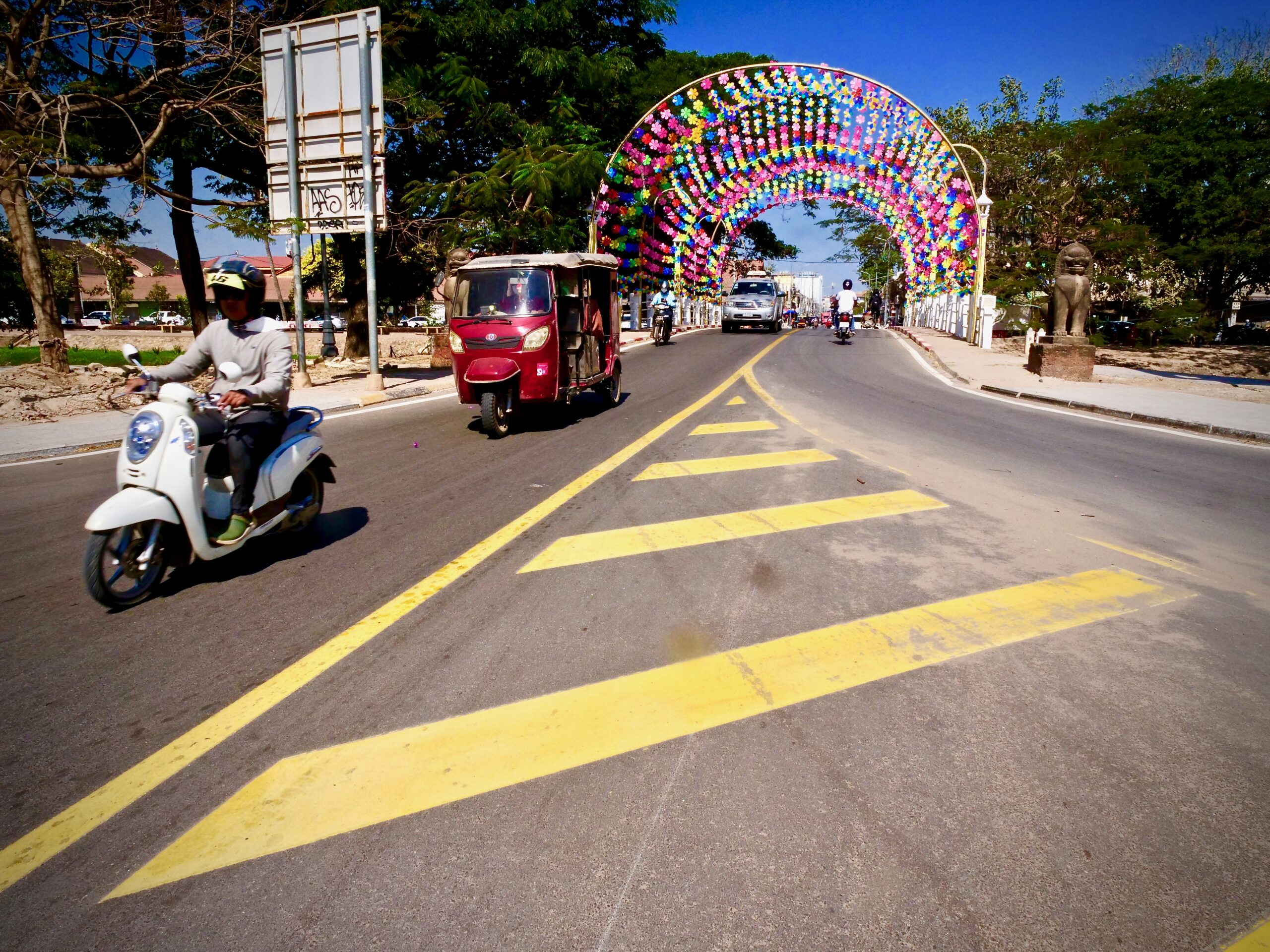
One customer, 22-year-old Rosa Tin, hopped off her weathered, pink bike outside the shop. She said she felt angry for months and frustrated biking around the city.
“Go this way, close this way — all roads were closed,” she said. Riding a bicycle took a “long, long, long” time, but the improvements have allowed her to cruise in peace.
Another resident braving the streets on two wheels, Dave Scott, ran a dirt biking tour company until the pandemic killed his business. He recovered by delivering baked goods through BreadHeadz, a company he opened with his partner in 2020.
“I was missing riding off road so the state of the roads made up for this,” he said. “There was never a dull minute. Stressful, but never dull.”
He recalled regular, near-death encounters on delivery runs with large construction trucks barrelling down the streets. On one occasion, a truck coming down the wrong side of the road veered in his direction.
“I just dumped my bike and jumped out of the way,” he said. “Missed me by millimetres, but my whole bike went under the truck.”
Despite nearly paying for the new roads with his life, Scott said he still believes the construction was a worthwhile investment for the city. He hopes the drainage will hold up once the rainy season begins. In the meantime, he’s gotten used to zipping around town on his deliveries, more go-kart track than off-road adventure these days.
“It’s been a very difficult couple of years for everyone in Siem Reap,” Scott said. “But now I think the changes will bring a better quality of life to people here.”
Photos by Jack Brook for Southeast Asia Globe
This article was updated with a new headline on 2 February 2022.

